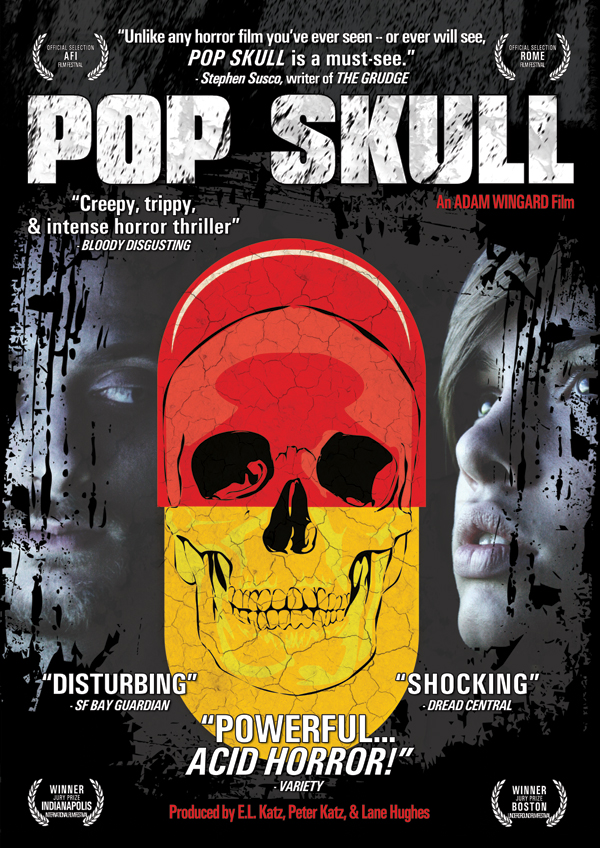A Halloween Night October Chiller.
Honestly, I think this is the one to see this year for Halloween. It's a moody little chiller, with a very different kind of story involving found footage and a demon who stalks anyone who views what's found. Ethan Hawke, as always, is amazing, as a true-crime author who moves his family into the house of a crime scene. He finds film in the attic, begins to watch, discovers horror after horror on those Super 8 reels, and learns that his family is being stalked by an ancient demon, Bughuul, a creature who preys on his victims through iconography.
Bughuul, also called "Mr. Boogie," is a fascinating movie monster, and there is little doubt we've not seen the last of him at the end of Sinister. This could easily be the new Saw series, but if there are sequels to be spun I hope they leave it in director Scott Derrickson's hands. The first Saw film explored some very interesting themes and territory, only to have the following films wallow in the grime of torture-porn and the like. I'd hate to see a little mood piece like Sinister follow that path -- but I'd really like to find out more about Bughuul.
The film is getting rave reviews, and yet I've talked to a few friends about it and they aren't as enthusiastic. I guess it depends on which side of the spectrum you're on. This is not a blood and guts film. You won't find but a hint of the splatter party here (although it is fully present). It is my opinion that good horror films horrify without necessarily showing all the details of the horror, and they also boil to the surface using believable characters in tense, real situations. The Shining is a great example of this, and in a lot of ways Sinister feels like it hearkens back to a classier era when the fear itself was the fun, not the desecration of human bodies.
For the past few years, Derrickson has been a member at a forum I've been involved with for thirteen years, in one incarnation or another: Arts & Faith. He has been able to share quite a few of his views there about what it means to be a Christian, and creative, and a person unafraid of the world's horrors. This is obviously a somewhat different way to approach the faith than most. He has stood up to criticism with wit and a smile, and is always personable and congenial in his encounters on our boards. But honestly, I can't see much criticism being thrown his direction over Sinister. It's like last year's Insidious. It may be the finest horror film you'll find in theaters this year.
Bughuul, also called "Mr. Boogie," is a fascinating movie monster, and there is little doubt we've not seen the last of him at the end of Sinister. This could easily be the new Saw series, but if there are sequels to be spun I hope they leave it in director Scott Derrickson's hands. The first Saw film explored some very interesting themes and territory, only to have the following films wallow in the grime of torture-porn and the like. I'd hate to see a little mood piece like Sinister follow that path -- but I'd really like to find out more about Bughuul.
The film is getting rave reviews, and yet I've talked to a few friends about it and they aren't as enthusiastic. I guess it depends on which side of the spectrum you're on. This is not a blood and guts film. You won't find but a hint of the splatter party here (although it is fully present). It is my opinion that good horror films horrify without necessarily showing all the details of the horror, and they also boil to the surface using believable characters in tense, real situations. The Shining is a great example of this, and in a lot of ways Sinister feels like it hearkens back to a classier era when the fear itself was the fun, not the desecration of human bodies.
For the past few years, Derrickson has been a member at a forum I've been involved with for thirteen years, in one incarnation or another: Arts & Faith. He has been able to share quite a few of his views there about what it means to be a Christian, and creative, and a person unafraid of the world's horrors. This is obviously a somewhat different way to approach the faith than most. He has stood up to criticism with wit and a smile, and is always personable and congenial in his encounters on our boards. But honestly, I can't see much criticism being thrown his direction over Sinister. It's like last year's Insidious. It may be the finest horror film you'll find in theaters this year.








.avi_snapshot_00.29.59_%5B2012.09.27_21.46.41%5D.jpg)







